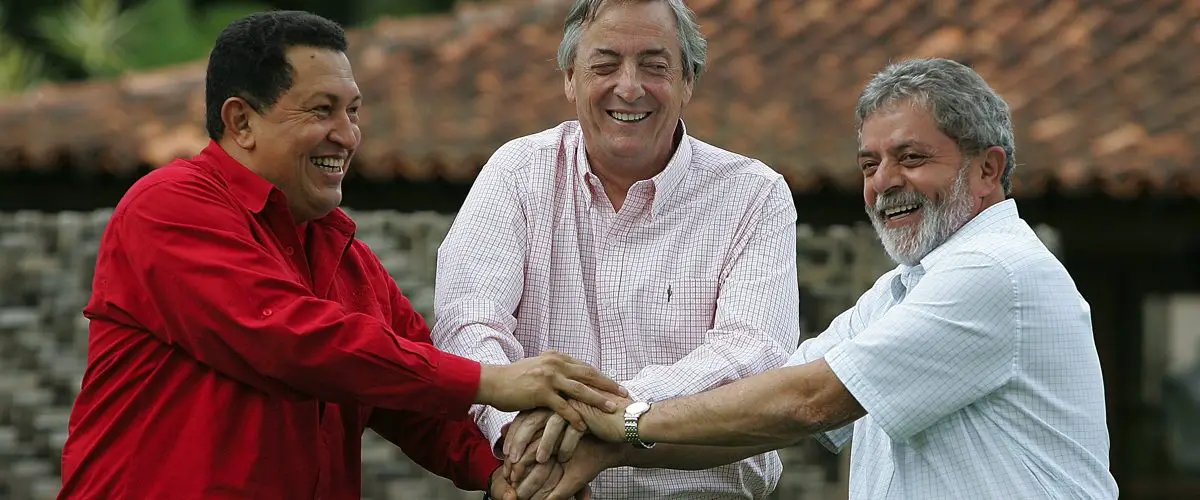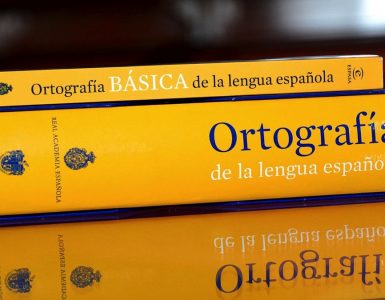Knowing how to introduce yourself in Spanish opens many doors. It allows you to meet new people from all walks of life and it is especially important when it comes to identifying yourself. The expressions and phrases to introduce ourselves and say our name in Spanish are very similar to those of the English language. Here we will go over some common ways to say my name is in Spanish, as well as other expressions to introduce ourselves to new people.
Mi nombre es – My name is
This is the most popular and openly extended expression in the Spanish language to say my name is. It is used in both everyday and formal situations and is perfect for introducing ourselves if we accompany it with a greeting. For example:
Structure: Greeting + possessive pronoun + Name + to be + Personal Name
| Spanish | English |
|---|---|
| ¡Hola! Mi nombre es Alejandro. | Hello! My name is Alejandro. |
| ¡Mucho gusto! Mi nombre es Vanessa González. | Nice to meet you! My name is Vanessa González. |
(Yo) Me llamo – I am called
Another expression widely used in more formal social settings and even in exhibitions, conferences and presentations is this one. Used universally throughout the Spanish-speaking world, it is usually accompanied by an initial greeting. Also, the subject may be tacit or it may be mentioned. For example:
Structure: Greeting + reflexive pronoun + verb to call + Personal Name
| Spanish | English |
|---|---|
| ¡Buenos días! (Yo) Me llamo Francisco. | Good morning, my name is Francisco. |
Structure: Greeting + Subject + reflexive pronoun + verb to call + Personal Name
| Spanish | English |
|---|---|
| Un placer saludarle, yo me llamo Juan. | A pleasure to meet you, my name is Juan. |
It also usually goes before the greeting, like this:
Structure: Reflexive pronoun + verb to call + Personal Name + Greeting
| Spanish | English |
|---|---|
| (Yo) Me llamo Juan, es un placer conocerte. | My name is Juan, it’s a pleasure to meet you. |
Soy – I am
One of the simplest ways to say my name is with this short expression. It is widely used by all Spanish speakers, however, it is more appropriate for informal social settings and everyday situations. For example:
Structure: Greeting + to be + Personal Name
| Spanish | English |
|---|---|
| ¡Hola! (Yo) Soy Ana Martínez. | Hello! I am Ana Martínez. |
Although it is a more colloquial way of saying my name is, it can be used as a personal introduction or in more formal situations. For example:
Structure: Personal Introduction + to be + Personal Name
| Spanish | English |
|---|---|
| Me gustaría presentarme, (yo) soy Ana Martínez. | I would introduce myself, I am Ana Martínez. |
Mi gracia es – My name (grace) is
During the time of the Spanish empire, it was said that a person’s full name was his or her ‘grace’. It was therefore very common, especially during the conquest of the New World, to introduce oneself in this way, accompanied by a slight and prudent bow. Widely used in Spain and some countries in the Americas under Spanish rule, this was the way our ancestors introduced themselves:
Structure: Greeting + Receiver + Possessive pronoun + grace + to be + Personal Name
| Spanish | English |
|---|---|
| Buen día caballero, mi gracia es Anastasia del Toro. | Good day gentleman, my name is Anastasia del Toro. |
If it was an aristocrat or someone with high social status, the presentation was more distinguished, like this one:
Structure: Greeting + Personal pronoun + Possessive pronoun + grace + to be + Personal Name + Title or Social Position
| Spanish | English |
|---|---|
| Tengan vosotros esplendida tarde, mi gracia es Andrés Rodríguez, coronel de la Armada Superior. | Have a splendid afternoon, my grace is Andres Rodriguez, Colonel of the Superior Army. |
Say your name and wait for the person you’re talking to to respond
This way of saying my name is in Spanish is the most informal and colloquial one of all. It is usually accompanied by a shake of the hands and thanks or simply a slight nod of the head. It is a friendly way to break the ice and excellent if you are looking to make a spontaneous first impression.
These are the 4 ways to say our name and introduce ourselves. But what about introducing or saying someone else’s name? Let’s take a deeper dive.
Ways of introducing or saying another person’s name in Spanish
Ella/Él es – Ésta/Éste es…
If you are learning Spanish, you may have noticed that ‘ser’ and ‘estar’ are translated with the same verb – to be – in English. That is why, in everyday and informal situations, we can introduce another person by greeting the recipient beforehand and mentioning the kinship or relationship that the person to be introduced has with us with any of these verbs, in this way:
Structure: Greeting + Personal or demonstrative pronoun + to be + Possessive pronoun + Kinship + Personal Name
| Spanish | English |
|---|---|
| ¿Qué tal? Él (éste) es mi hermano Ángel. | How are you? This is my brother Angel. |
Structure: Greeting + Personal or demonstrative pronoun + to be + Possessive pronoun + Relationship + Personal Name
| Spanish | English |
|---|---|
| Hola, ella (ésta) es mi compañera de trabajo Ana López. | Hi, this is my co-worker Ana López. |
Another correct way would be this:
Structure: Greeting + Personal or demonstrative pronoun + to be + Personal Name + Possessive pronoun + Relationship
| Spanish | English |
|---|---|
| Hola, (ella) ésta es Ana López, mi compañera de trabajo. | Hi, this is Ana López, my co-worker. |
Te presento a – I present
Te presento isn’t usually directly translated into English as “I present” and is more akin to the last translation “This is”. You can introduce other people and include them in the conversation by using this expression and stating their name. It is very common in everyday conversations throughout the Spanish-speaking world and is done in the following way:
Structure: Receiver name + Reflexive pronoun + verb to present + Personal Name
| Spanish | English |
|---|---|
| Ángel te presento a Carmen Muñoz. | Angel, I introduce you to Carmen Muñoz. |
Structure: Receiver name + Reflexive pronoun + verb to present + Personal Name + Possessive pronoun + Relationship or kinship
| Spanish | English |
|---|---|
| Ángel, te presento a Carmen, mi esposa. | Angel, Carmen is my wife. |
Me gustaría presentarle – I’d like to introduce you to
This is a formal way of saying another person’s name in Spanish. You can introduce the another person to someone distinguished to whom you have respect and admire.
Structure: Receiver + Reflexive pronoun + Expression of desire + verb to present + Personal Name
| Spanish | English |
|---|---|
| Señora Ana, me gustaría presentarle a María Antonieta. | Mrs. Ana, I would like to introduce you to María Antonieta. |
You can also add kinship, relationship, or job performance, for example:
Structure: Receiver + Reflexive pronoun + Expression of desire + verb to present + Personal Name + Possessive pronoun + Kinship or Relationship
| Spanish | English |
|---|---|
| Señora Ana, me gustaría presentarle a María Antonieta, mi esposa. | Mrs. Ana, I would like to introduce you to María Antonieta, my wife. |
Structure: Receiver + Reflexive pronoun + Expression of desire + verb to present + Personal Name + Title or job performance
| Spanish | English |
|---|---|
| Señora Ana, me encantaría presentarle a Liliana Valencia, gerente de recursos humanos. | Ms. Ana, I would be pleased to introduce Liliana Valencia, human resources manager. |
Quiero presentarte – I want to introduce you to
This form of introduction is the same as the previous one, but tuteando. It is used more in Latin America, however, in some parts of Andalucia (Spain) it is also frequent, especially in trusting environments where there is a certain formality.
Structure: Expression of desire + verb to present + Personal Name + Possessive pronoun + Kinship, relationship or title
| Spanish | English |
|---|---|
| Quiero presentarte a Francisca, mi madre y asesora inmobiliaria. | I want to introduce you to Francisca, my dear mother and real estate consultant. |
¿Conoces a? – Do you know?
It is the quintessential way to introduce or make someone’s name known to a group of friends, family or acquaintances throughout the Spanish-speaking world.
Final Thoughts
As you can see, there are many ways to say my name is in Spanish and introduce other people but it often depends on the situation, the environment and the people you are addressing. I hope this will be useful when cultivating your social relationships in Spanish and that you will soon learn how to get by with this simple tutorial. ¡Sigue estudiando!










Add comment